I’m replacing the decking on the outside deck of the house I recently bought. I noticed that the deck, which extends out about 12′ from the house, slopes down about 3′ from the house to the outside edge. The deck structure is pretty sound. Should a deck slope away from the house? And, if it should slope away from the house, how much should it slope?
Discussion Forum
Discussion Forum
Up Next
Video Shorts
Featured Story
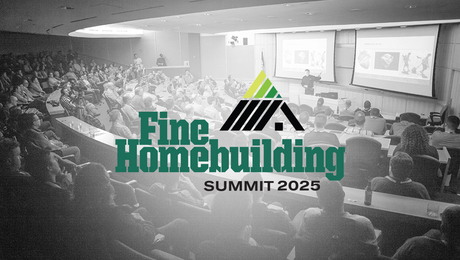
Join some of the most experienced and recognized building professionals for two days of presentations, panel discussions, networking, and more.
Highlights
"I have learned so much thanks to the searchable articles on the FHB website. I can confidently say that I expect to be a life-long subscriber." - M.K.
Fine Homebuilding Magazine
- Home Group
- Antique Trader
- Arts & Crafts Homes
- Bank Note Reporter
- Cabin Life
- Cuisine at Home
- Fine Gardening
- Fine Woodworking
- Green Building Advisor
- Garden Gate
- Horticulture
- Keep Craft Alive
- Log Home Living
- Military Trader/Vehicles
- Numismatic News
- Numismaster
- Old Cars Weekly
- Old House Journal
- Period Homes
- Popular Woodworking
- Script
- ShopNotes
- Sports Collectors Digest
- Threads
- Timber Home Living
- Traditional Building
- Woodsmith
- World Coin News
- Writer's Digest

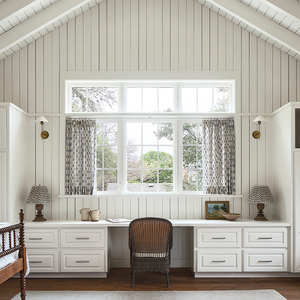
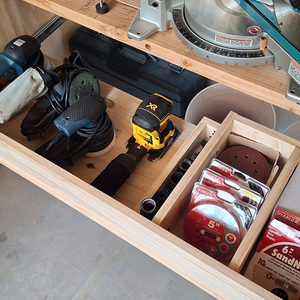
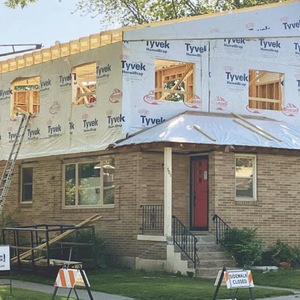
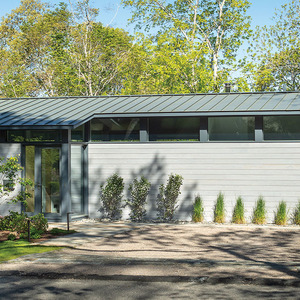













Replies
It should slope enough to drain. If there are gaps between the boards, it can be almost flat because the water can drip off every 6". 1/8" per foot would work well. There needs to be some thought given to keeping water away from the house/deck intersection, both to keep water out of the house and to keep the ledger and siding from rotting.
If you have a 3 foot slope in 12 feet of deck, that will certainly drain water well! Do you have trouble keeping the deck chairs from sliding off? I hope you meant to type 3 inches, which is 1/4" per foot.
Do it right, or do it twice.
No, no problem keeping the deck chairs from sliding off. I've secured them with deck screws. I just have a problem keeping people on the deck.
Sorry, I miskeyed the 3' there. I did mean 3" of slope in 12' of run.
that's a 1/4" per foot, a little steep but I guess it depends on how much water will need to be shed off. Personally, I go with 1/8" or 3/16" per foot, but even the heaviest storms in California don't put down a lot of water.
Yes, it has to fall away from the house, else you'd end up with a mess of water coming back at the house or staying put if you have a solid deck surface.
A deck needs to be sloped only when you have no gaps in your deck boards. This does not apply to installing PT tight because it will shrink when it dries out. If you have gaps between your deck boards, which you should, then you need no slope.
Sloping a deck is no substitute for proper flashing. If you ledger is well flashed, then slope is unnecessary.
1/4" is not a problem. If the deck was built level and has dropped since then, it would behove you to determine the cause of the sinking. If it's stable as you say, then I wouldn't worry about it.
Jon Blakemore
I'm going to weigh in with a few of my opinions here.
First, is that 1/8" is a minimum slope and that 1/4" is best. Most people do not notice their deck chairs sliding off with that pitch. At only 1/8" you have to true all your joists close to perfect. Just one with a crown can cause a swale that puddles water.
1/8" is acceptable for porches with a roof over but open decks need 1/4"
Second, is that with surface tension effects, most of the water will follow the slope and not leak through cracks left. The cracks are more for ventilation to allow drying after the storm than for drainage. Jon may be thinking of decks with the surface decking running parallell to the house. We get a lot of rain here so we always design the deck so the joists run parallell and the surface runs perpendicular to lead the water away from the house.
Third, if you are rebuilding, backprime all sides before installation with whatever sealer you are using, and hit the endgrain as you make your length cuts during intallation. This can add two to five years to the life of the deck boards in this wet climate. Probably more in other places. What material will this deck be?.
Excellence is its own reward!
Thanks for the advice. I'm going to redeck with pressure treated. The decking will run parallel to the house. I live in central Ohio which is fairly wet, especially in the spring (we've only had one dry day in the last few weeks).
Good point with the surface tension. If the cracks are small, water won't drain through.
I hadn't planned on priming/sealing the decking prior to installation. The deck is about six feet up so I figured I could get to everything except what's right on top of the joists.
In most cases, it would be a big mistake to prime and seal pressure treated decking and framing before you install it. It needs to dry out.
That's true Dog. For most other woods though, the point of contact between joist and decking is the place where it stays wet and rots out soonest..
Excellence is its own reward!
right on.